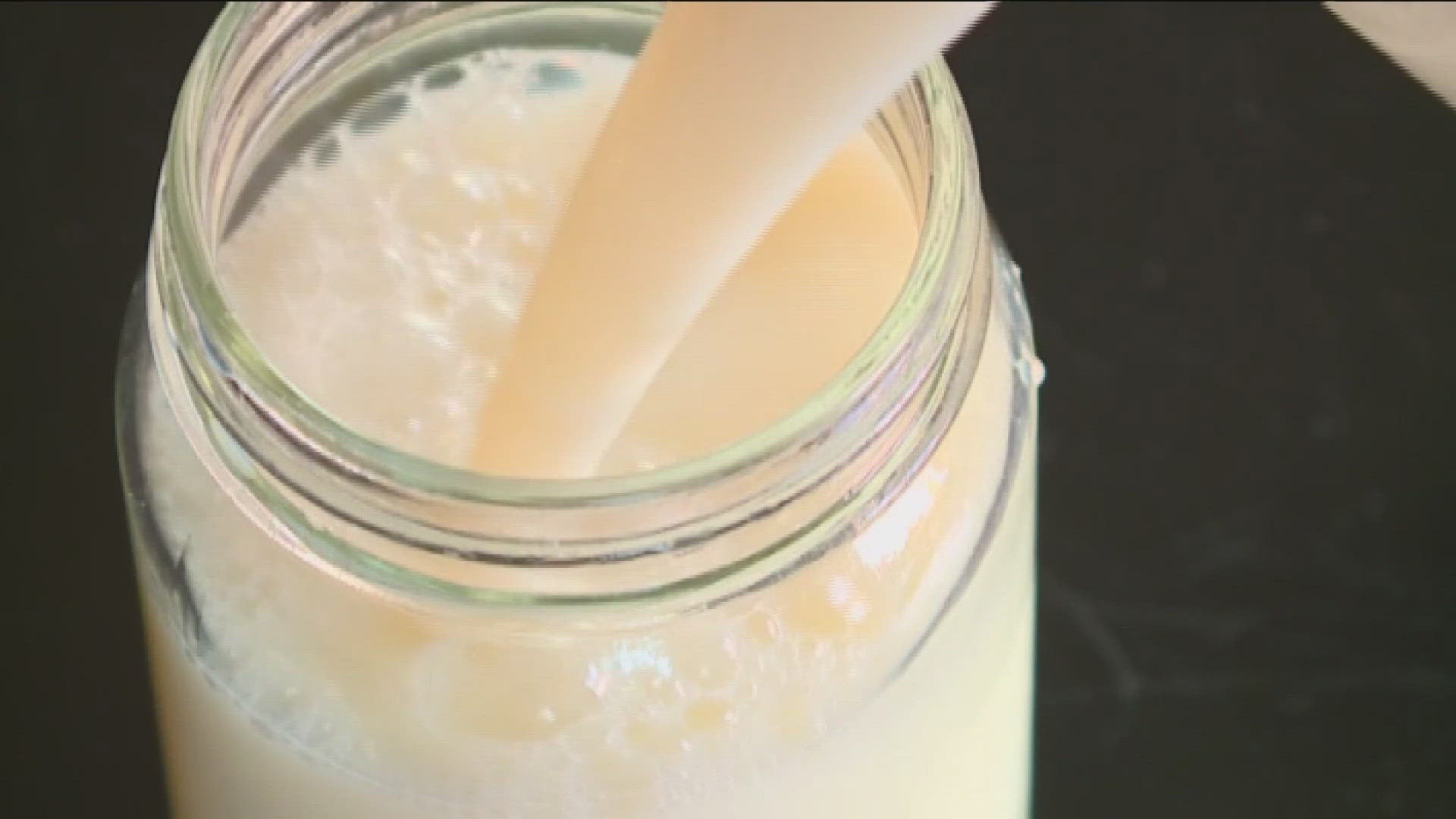BOISE, Idaho — This article originally appeared in the Idaho Press.
An outbreak of campylobacteriosis, a diarrheal illness caused by the Campylobacter bacteria, that infected 18 people statewide has been tied to raw milk from Paradise Grove Dairy in eastern Idaho.
The first positive case was reported July 24, and the outbreak is being investigated by the Idaho Division of Public Health, Central District Health (CDH), Eastern Idaho Public Health (EIPH) and the Idaho State Department of Agriculture (ISDA). Eleven of the 18 cases were in Ada, Boise, Elmore and Valley counties, served by CDH.
“Our epidemiology team became aware of the first case on July 29,” said Natasha Ferney, a community and environmental health manager for CDH. “On July 31, we were notified of the second confirmed case, and also on July 31, we requested to declare an outbreak. We were given the green light.”
All 18 people afflicted reported having consumed unpasteurized milk, 17 of them having acquired it from Paradise Grove Dairy, located about four hours from Boise in Monteview, Jefferson County. David Spencer, Paradise Grove’s owner, said that the Boise Co-op Market called him Aug. 2 to report that a customer had complained of falling ill after drinking Paradise Grove milk.
“Out of an abundance of caution, I started looking at my place and saying, ‘could there be any problems?’” Spencer said. “And I found a water circulator on my hot water system that was not working properly. I fixed that, and then out of another abundance of caution, we stopped producing milk.”
In order to obtain a permit to sell unpasteurized milk in Idaho, a farmer must identify all participating animals and have them tested annually for tuberculosis and brucellosis. Raw milk can be sold on-site, at farmers markets or grocery stores, but cannot be sold across state lines or used as an ingredient at restaurants or cafes.
After Paradise Grove suspended milk sales, Spencer had the dairy’s milk re-tested for Campylobacter and, he says, obtained four sets of results, all clean.
“Low, low, low, low bacteria. Then Boise Co-op came back and told me they had two more people get sick, and that’s the last I heard about sick people,” Spencer said. “The (Department of Health and Welfare) took the last (infected) person’s milk and tested it for Campylobacter, and it came back negative. So I thought, great, there’s no problem.”
Paradise Grove resumed milk production on Aug. 12. Spencer said he was unaware that more than three people were sick until Aug. 15, when he learned that the Idaho Department of Health and Welfare (IDHW) was about to issue a press release about the outbreak. Whereas before he had his milk tested twice a month, it is now being tested twice a week, which he plans to continue indefinitely.
“Dairy products have such a short shelf life that by the time symptoms are identified and a report is made back to public health that there may be a foodborne illness … the product that caused the problem has long since either been thrown away or been consumed in its entirety,” state veterinarian Scott Leibsle said. “To my knowledge, there has not been identification of the (Campylobacter) pathogen) from the (Paradise Grove) product, but that’s not uncommon because the product that may have originally caused the problem is long since gone off the shelf.”
Currently, Idaho has about 170 raw milk producers. Leibsle said that he has seen about five or six instances of foodborne illness outbreaks linked to raw milk dairies in his time with ISDA. According to the U.S. Centers for Disease Control and Prevention (CDC), raw milk sickens 840 times as many people per year as pasteurized milk, and hospitalizes 45 times as many, causing 96% of illnesses relating to contaminated dairy products.
“Individuals especially at high risk of illness, after consuming raw milk, need to be aware of the risks,” Ferney said. “The high-risk groups would include young children, pregnant women, the elderly and those with compromised immune systems.”
Additionally, consumers should take care to ensure that milk is kept cold after it is taken home from the store. Symptoms of campylobacteriosis include diarrhea, nausea, vomiting, fever and stomach cramps, and typically appear between two and five days after exposure.
This article originally appeared in the Idaho Press, read more on IdahoPress.com.

